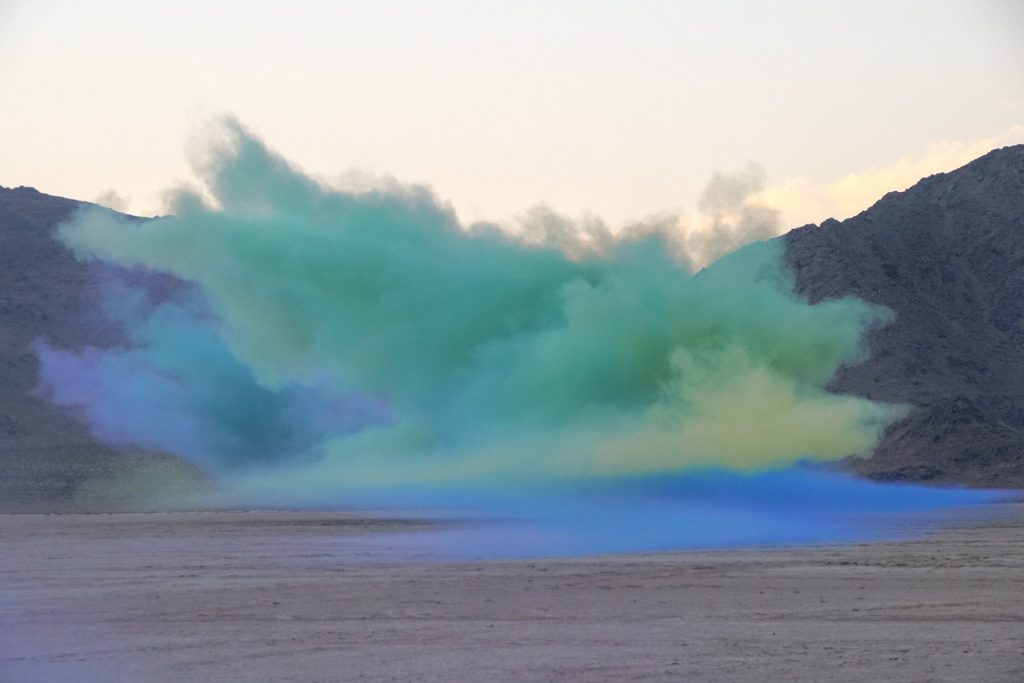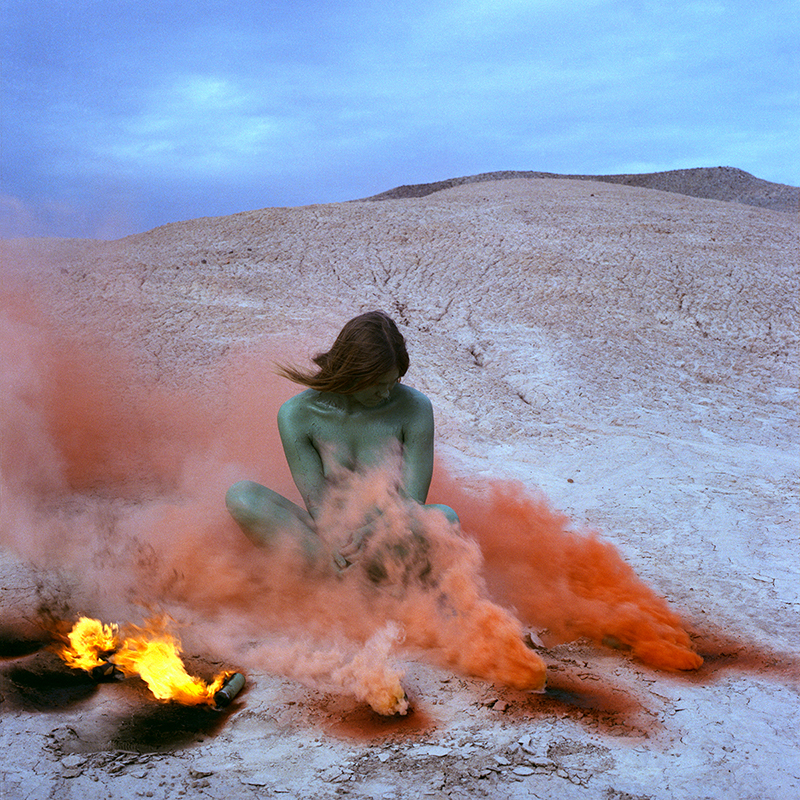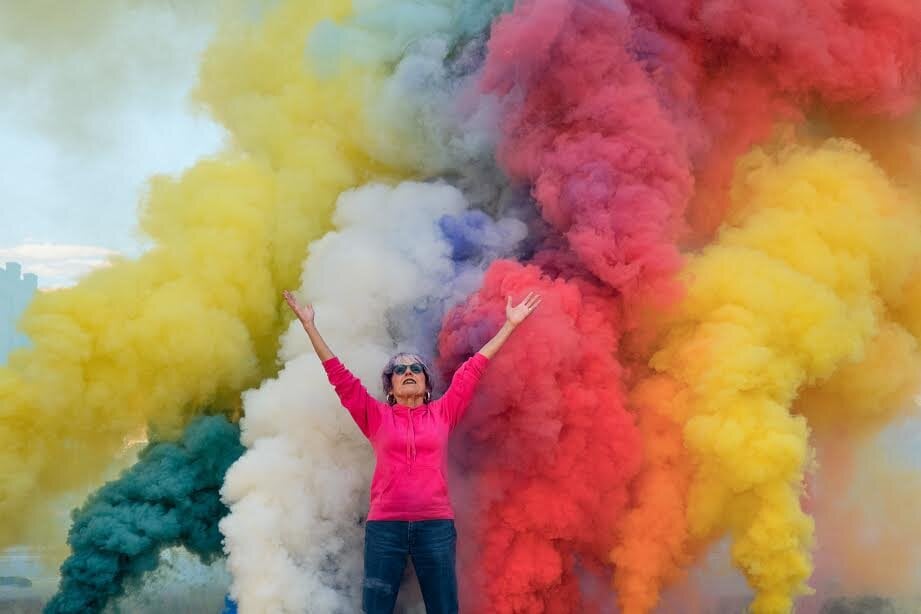Art & Exhibitions
A Wildlife Habitat Has Cancelled Judy Chicago’s Smoke Sculpture for Desert X After Environmental Activists Raised Alarms
A local writer had expressed her concerns about the work's potential environmental impact.

A local writer had expressed her concerns about the work's potential environmental impact.

Sarah Cascone

Desert X, the open air biennial staged in California’s Coachella Valley, has run into roadblocks with another one of its projects. The Living Desert Zoo and Gardens in Palm Desert has cancelled plans to host a site-specific smoke sculpture by artist Judy Chicago due to environmental concerns.
Chicago planned to release plumes of colored smoke at the foothills of Mount Eisenhower on April 9. But after local scientists and a preservation advocate voiced concerns over possible risks to wildlife posed by the work, titled Living Smoke, the Living Desert, a zoo and wildlife habitat dedicated to preserving the desert ecosystem and its flora and fauna, decided to withdraw its participation.
“Huge volumes of colored smoke would obviously have a frightening and unpredictable effect on wild and captive creatures,” said Palm Springs arts and environmental writer Ann Japenga, who spearheaded opposition to the project, in an email to Artnet News. “Two prominent local wildlife biologists confirmed that the event could endanger animals. It takes some serious mental gymnastics to pretend otherwise.”
The decision to scuttle the work came as a surprise to Chicago, who said she had worked for months to address any potential safety issues posed by Living Smoke.
“Of course [the Living Desert] had concerns, which I respected,” Chicago told Artnet News in an email. “We spent a considerable amount of time discussing how to bring my work to that landscape without disturbing the wildlife or damaging the environment.”
Last month, when she learned of Chicago’s plans, Japenga sent a letter to the artist, the Living Desert, and Sabby Jonathan, a former Palm Desert mayor and current councilman, among others. (Johnathan previously voted against the city’s sponsorship of the exhibition, according to the Desert Sun, due to last year’s controversial Desert X AlUla in Saudi Arabia.)
Japenga suggested that the piece was unsafe and should be relocated to a more appropriate venue. She included quotes from two local wildlife biologists she consulted, who had raised concerns about possible animal safety issues, including 11 bighorn lambs recently born in the area.
Shortly thereafter, the Living Desert pulled the plug on the project.

Judy Chicago, Living Smoke (2021). Photo by Donald Woodman, courtesy of the Artist Rights Society.
“Desert X is committed to protecting the desert landscape and its wildlife. We work with experts and follow recommendations to ensure our exhibition leaves no trace,” Jenny Gil Schmitz, Desert X’s executive director, told Artnet News in an email. “We are deeply disappointed that the Living Desert has reversed its decision to host Judy Chicago’s work after months of research and preparation to ensure the safety of the animals and their natural surroundings.”
Gil Schmitz told the New York Times that the organization pulled out because “they didn’t want to be part of a controversy regarding their environmental preservation.”
“The Living Desert began discussions with DesertX in December 2020 with the desire to partner together to produce an exceptional work of art that supported their efforts. However, with the event only six weeks out, no formal contract finalized, and environmental concerns, the Living Desert concluded that there is just not enough time to address all of these factors in order to reach a contractual agreement,” the organization’s president and CEO, Allen Monroe, told Artnet News in an email.
Chicago says that ecological concerns are at the forefront of her “Smoke Sculptures,” as well as her earlier “Atmospheres” series, “which were rooted in my desire to create an alternative type of Land Art, one that—instead of uprooting or bulldozing the environment—merged color, wind and landscape in order to illuminate the beauty of the world in which we live,” Chicago said.

Judy Chicago, Immolation (1972); from Women and Smoke (2018). Photo courtesy of Nina Johnson.
The ephemeral works always use non-toxic smoke. For the Living Desert project, Chicago planned to use an electronic trigger, eliminating the loud ignition noise to avoid startling animals. The Desert X piece would have marked the Living Desert’s 50th anniversary, and was being funded by collector Jordan Schnitzer, who acquired Chicago’s print archive in 2020.
But Japenga remained concerned about the press release’s promise to “transform a 1,200-acre desert landscape.”
“When [Chicago] did these pieces in the 1970s, they were small, spontaneous, and bohemian. Wonderful for all involved, I’m sure. I wish I’d been there!” Japenga said. “Judy’s smoke show is now a large-scale, slick entertainment spectacle.”
“If you look more closely, there is a lot of money behind the event,” she added. “Money and publicity tends to make people look the other way.”
Chicago responded that the press release did not mean to suggest that the entire landscape would have been covered with smoke. “That’s ridiculous,” she said. “Rather, we were speaking aesthetically. That is, by releasing short-lived smoke into the large desert landscape—where it would move and mix with the wind—the visual environment would be transformed by color.”

Judy Chicago. Photo by Donald Woodman, courtesy of the Artist Rights Society.
Environmental concerns also led to the cancellation of an artwork that was intended as part of the 2018 edition of Desert X. At the time, he local bighorn sheep population was suffering an epidemic, so the biennial moved to cancel a Jenny Holzer light projection piece. And this year, the exhibition has had to relocate an installation by Serge Attukwei Clottey due to concerns that it exploited local issues with tainted groundwater. The event has also had to contend with ongoing objections to its Saudi Arabia connection.
Looking ahead, Desert X hopes to find a new home for Chicago’s work. “We stand by Judy and all of our collaborating artists and are actively seeking alternative sites so that Judy’s work may be enjoyed peacefully and safely by a global audience as planned,” Gil Schmitz said.
In the meantime, Chicago stands behind her record as a supporter of the environment. Her critics “might have good intentions,” she said, “but given my decades-long commitment to environmental justice and animal rights, I am the wrong target.”